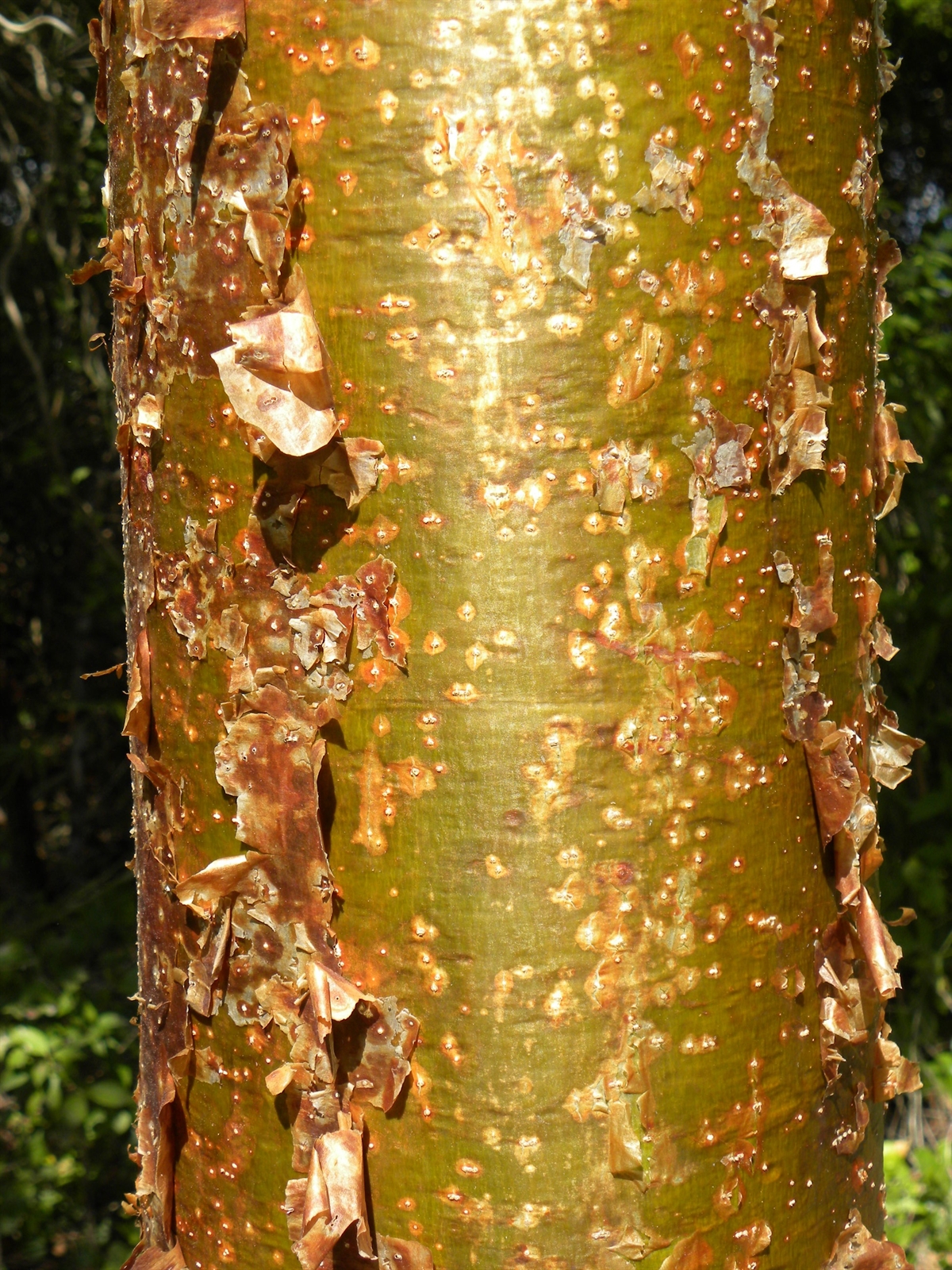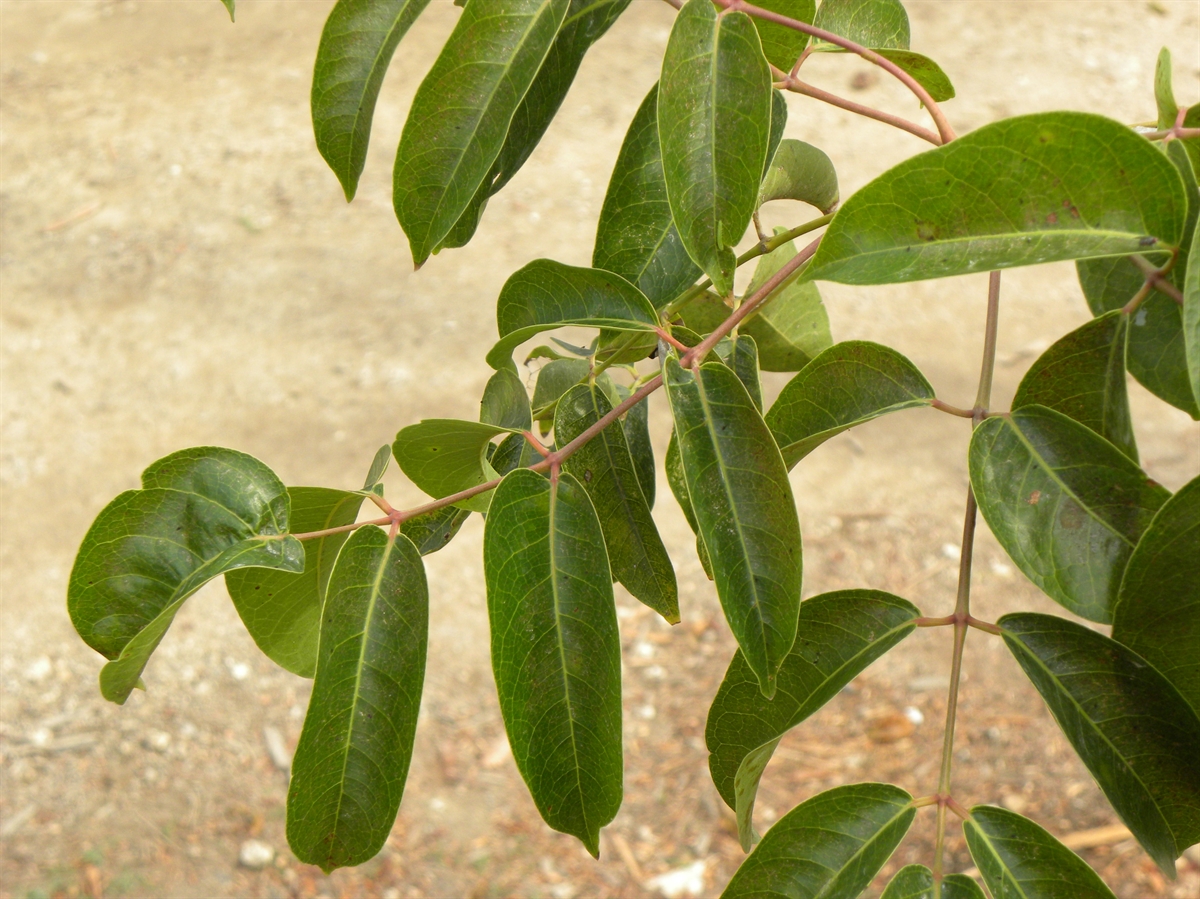Habit: Bursera simaruba ranges from a bush to large trees over 15 meters in height. The trunk is a reddish brown that peels off in thing layers. New growth is more greenish. The leaves are compound ranging from 3 to 9 leaflets. They are arranged alternately and the leaflet margins are entire.
The incomplete, imperfect actinomorphic flowers appear in before new leaves sprout during the spring in panicles. Plants are monoecious with every individual producing both male and female flowers. The staminate flower calyx and corolla is 5 lobed with 10 stamens. The carpellate flowers calyx and corolla is 3 lobed with 6 infertile stamens. The fruit is a berry with three seeds.
Habitat: Bursera simaruba grows in Dry Broadleaf Evergreen Formations (coppice) on both a limestone and sand substrate. It is a common species throughout the islands. It is also found in the Pine Woodlands.
Distribution: Bursera simaruba occurs on all islands of the Lucayan Archipelago as well as Florida, the Caribbean, and Central and South America. In the Bahamas there is a related endemic species (Bursera frenningiae) that occurs in the southern islands.
Cultural usage: There are many cultural uses of Bursera simaruba. Within the Bahamas it is used medicinally to treat circulatory problems as well as in strengthening and aphrodisiac teas. Throughout its range it is propagated as an ornamental. Also in areas of Central and South America is used to make living fence poles due to its ability to grow from cuttings of the trunks.


